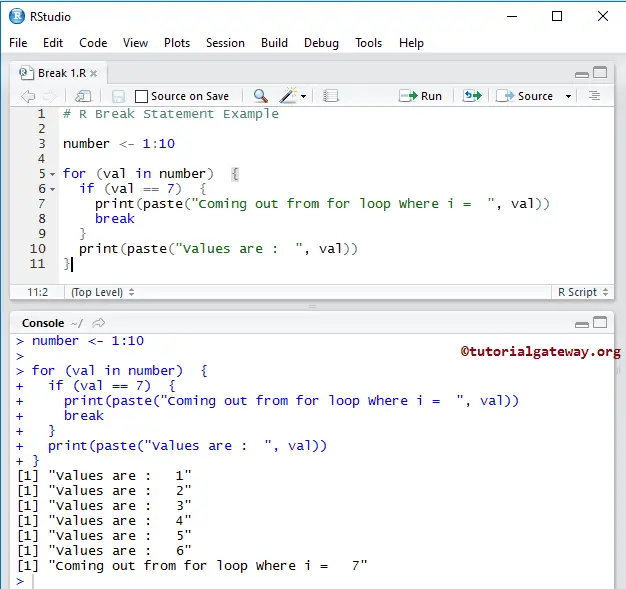
If you try to run the previous codes for only 1000 or 10000 iterations you won’t see the difference. However, the more resource consuming the task is, the more difference will arise pre-allocating objects in memory. The body of the do.while loop runs only once if the user enters a negative number. When the number is negative, the loop terminates the negative number is not added to the sum variable.
#Do while loop in r code
Note that the results may depend on the speed of your computer and will vary if you run the code several times. Here, the do.while loop continues until the user enters a negative number. start_time <- Sys.time()Įnd_time - start_time # Time difference of 0.126972 secs In the case of while loop the condition is checked first and if it true only then the statements in the body of the loop are executed. Second, copy the previous code and pre-allocate the store variable with the final length of the vector. The do while loop differs significantly from the while loop because in do while loop statements in the body are executed at least once even if the condition is false. start_time <- Sys.time()Įnd_time - start_time # Time difference of 0.4400518 secs (running time on my computer) The Sys.time function will store the time when the function itself is executed, so make sure you call the following code at once, not line by line. Let’s see an example:įirst, you can create a variable named store without indicating the size of the final variable once filled inside the loop. This technique consists on reserving space for the objects you are creating or filling inside a loop. If you run or plan to run computationally expensive tasks, you must pre-allocate memory. If I had to make a guess, this snippet of code may have been adapted from one which did just that - and instead of simply removing the test, the author changed the & to ||.Loops are specially slow in R. Here we learn about loops which allow sections of code to run zero or more times, with a controlling logical expression. It will cause the while loop to halt at the first empty line. If X10 after an execution of the do-group, no further executions are. do while (AB) until (X10) However, if AB, the do-group is executed. In the following example, if AB, when the DO statement is first encountered, the do-group is not executed at all. Using & (AND) means that the whole statement will only return a zero status if read is able to read a line, AND that line is not empty. That is, the statements DO WHILE (AB) and DO UNTIL (AB) are not equivalent. Something that is occasionally useful is to do while read -r line & ]. Note that such a file is not a valid text file, as that line is not a valid line) (As pointed out, this will catch the odd final line of input that is missing its trailing newline. As far as I can see, || ] doesn't actually accomplish anything. the head of the while-loop) that decides whether the while-loop should keep running. Since the test returns true if $line is not empty, we're back to a nonzero exit, throwing us out of the while loop. while-loops start with a logical condition (i.e.


It's a bit confusing as to why that would be there, but straightforward to explain what it does: || is an OR statement, and ] is only going to execute when read returns a nonzero exit code, at which point $line will be empty. The second command runs if the first returns a falsy status, and the result is the exit status of the last command that executed.Ĭompare: $ printf 'foo\nbar' | ( while read line do echo "in loop: $line" done Īnd $ printf 'foo\nbar' | ( while read line || ] do The cmd1 || cmd2 construct is of course just like the equivalent in C. What's the point in adding a new line to the end of a file? and Why should text files end with a newline? on SO. wc -l counts the newline characters, and so ignores a final incomplete line. Other tools than read can also care, e.g. I said "incomplete line", since the POSIX definitions of a text file and a line require a newline at the end of each line. Without the extra test, such an incomplete line would be read into $line, but ignored by the loop. If the input contains a line fragment without a newline in the end, this test will catch that, and the loop will process that final incomplete line, too. It's useful since read returns a success if and only if it sees a newline character before the end-of-file. ] tests if $line (the variable just read by read) is not empty.


 0 kommentar(er)
0 kommentar(er)
